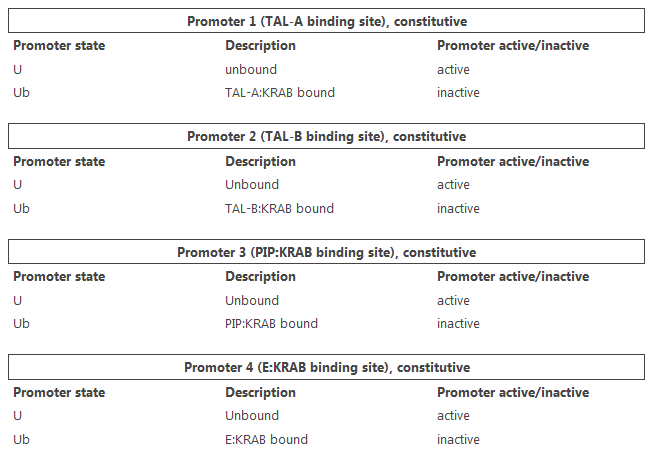Team:Slovenia/ModelingDerivation
From 2012.igem.org
Deterministic model derivation - genetic switch
The deterministic model for the mutual repressor switch was derived in the following way.
We assumed the following binding site states were possible:
Active promoter state is a state leading to gene expression.
Construct 1 promoter state transitioning is described by a reaction:
The fractional occupancy of construct 1 promoter, f1, can be expressed as a ratio of active states to all states:

The equations for other constructs take the same form.
Assuming equilibrium of binding and unbinding, it follows that the fractional occupancy for construct 1 promoter is:

To account for non-linearity, an exponent n1 was added, and the equation generalized to:

Kr is the amount of TAL-A:KRAB it takes for f1 to be equal to 50% when n1=k1=1.
Derivation for constructs 2, 3 and 4 was similar except for different transcription factor names.
Fractional occupancies were then used to construct a set of ordinary differential equations representing each protein production. Because each protein can be produced from different constructs, production rates (including leaky rates) were summed together. E.g., because TAL-B:KRAB is produced from both constructs 1 and 3, fractional occupancies f1 and f3 were used and corresponding terms summed to obtain:

Since construct 5 promoter has no binding sites and is active at all times, fractional occupancy of the promoter is equal to 1.
The positive feedback loop switch model was derived in a similar manner.
Deterministic model of the mutual repressor switch
Deterministic model of the positive feedback loop switch
 "
"


